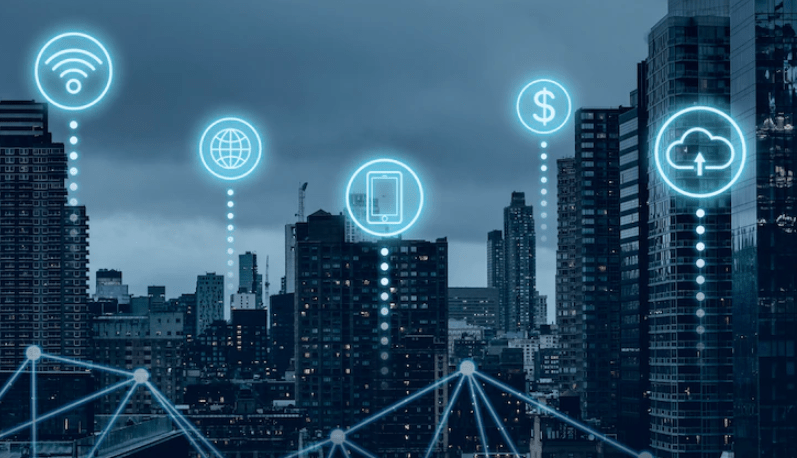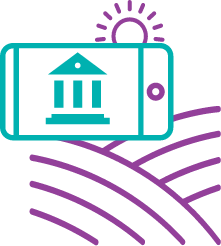
Ease of access and use, personalization and on demand availability characterizes the modern customer’s engagement with most brands. So, why should banking be any different? Traditional banks are pushing ahead with their digital transformation and modernization agenda to meet customer expectations and ensure customer loyalty. And the roll out of 5G networks across the world will help banks achieve their new customer service objectives.


The 5G Roll Out
5G or the 5th generation mobile network is a new global wireless standard that is designed to deliver low latency, reliable, high data capacity connections. After some delay, 5G networks are being rolled out across the world. Mobile operators in more than 125 countries have already invested in 5G technology.1 And as of May 2020, 42 countries had launched 5G services. By 2025, there are likely to be more than 2.6 billion 5G connections in the world, and US, North East Asia and Western Europe will lead the world in 5G usage.2 As more countries and regions adopt this technology, banks must work on aligning their digital transformation strategies with the possibilities of the 5G era.

Advantages Of 5G
5G offers some clear advantages over the previous generations of wireless networks. First, is the speed of data transfer which lends itself to faster video streaming. It is also a powerful driver of emerging technologies like edge computing, and artificial intelligence. Second is superior connectivity or the ability to support millions of devices per square kilometer without compromising on quality of service. And third is low latency. The 40-50 second latency or delay between action and result of 4G networks can be reduced to less than 10 milliseconds with 5G, resulting in a seamless experience for the end customer. All three hold great significance and promise for the banking sector:
Faster Digitalization:

Hyper Personalization:
As competition from fintechs gets fiercer, the goldmine of customer data that banks have is the key to offering more personalized services to the customer. Banks need to be able to analyze reams of customer data from across operational silos to understand behavior and patterns, and gauge preferences to design customized offerings in real time. The lightning-fast data transfer capabilities of 5G networks will help banks deploy data centric technologies such as AI and ML. This could ensure better lending decisions and loan processing, more accurate product recommendations and highly personalized digital assistants. 5G networks will allow large volume of processing to be done on the cloud and may eventually eliminate the need for banking apps as we know now.

Augmented Reality, Virtual Reality:
5G with its increased bandwidth and very low latency could enable the use of Augmented Reality (AR) and Virtual Reality (VR) in banking sector. 5G holds the key to immersive and engaging customer experience across channels. On the one hand it can be used to equip virtual assistants and chatbots with better audio, video, and language processing capabilities. On the other it can enable the use of spatial computing where digital data can be manipulated in non-digital form to provide extended or mixed reality scenarios and immersive experiences. Banco Santander of Spain is already working with Telefonica to launch joint innovation projects using 5G technology and edge computing. Using virtual reality and edge computing technologies, Banco Santander allows customers to virtually visit the Santander work café at the bank’s office in the center of Madrid. Other players in the financial industry like Westpac Bank, Citibank, CapitalOne, and Visa are also exploring the possibilities of AR and VR in a 5G powered world.3,4,5,6<

Reimagining the Physical Branch Experience:
Bank branches can be converted to smart branches with 5G. By allowing banks to easily implement technologies like video analytics, VR, AR, facial recognition, 5G could enable better branch monitoring and customer identification. Chinese banks like Bank of China and Chinese Construction Bank have already started using 5G technologies in their branches to connect different equipment and improve customer experience.

Pop Up Branches:
Pop up branches or micro branches staffed by a few employees help take banking services to remote locations or to new locations to innovatively connect with new demographics. The infrastructure is portable and compact and can easily be transported where needed. All it needs is fast networks and connectivity, both of which 5G will deliver. PNC Banks in the US has set up pop-up branches in the West Virginia University campus to reach the student population. It can also be used in case of natural disasters that render traditional banking services inaccessible to affected populations. For example, Wells Fargo sent trucks equipped with ATMs to affected areas after Hurricanes Harvey & Irma to help them easily access their money when they needed it most.

Financial Inclusion:
Despite decades of sustained efforts by governments across the world, a large chunk of the global population remains unbanked. 5G powered pop-up branches or mobile banking can help further the financial inclusion agenda by taking banking services to remote and rural locations. 5G will be the backbone for VR powered digital banking services in these areas. The speed and low latency will also allow real time language translation on mobile devices, kiosks, and other wearables, which would be a boon for rural customers in a multilingual country like India.

Security and Fraud Prevention:
The speed and low latency of 5G technology will facilitate fraud detection in real time. Security vulnerabilities identified by banks can be updated in real time without interrupting customer services. Banks and financial institutions would no longer need to depend on one form of biometric authentication. The high speed and receptiveness of 5G would enable multidimensional biometric security procedures that combine elements like facial recognition geo location and customer’s physical characteristics in real time to deliver instantaneous verification.
Customer expectations from banks has changed considerably over the last decade. As banks look to overhaul their processes and systems to cater to the modern customer, they must consider leveraging 5G to sharpen their digitization strategies. 5G will drive the next wave of transformation in the financial industry. And it will pave the way for the new age of ‘invisible banking’ where banking is intuitive and invisible.

Sources:
1Businesswire
2Businesswire
3Research and Markets
Binesh K
Binesh holds a management degree from IIM-L and has worked in Management Consulting, EdTech & Insurance sectors